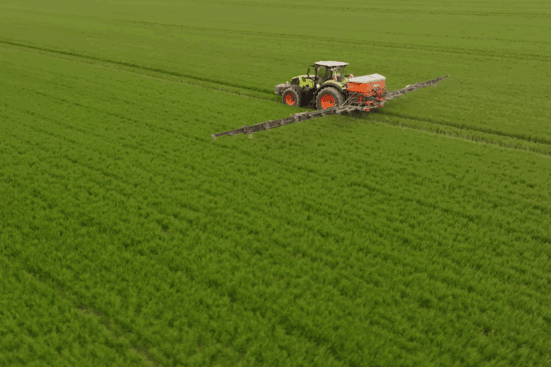
Meet changing market demands with efficient alternatives for product development, customized tooling, and legacy equipment support.
Changing environmental conditions and variations in regional farming require that manufacturers become more agile to meet customer needs. Whether it’s faster product development, greater customization, obsolete part replacement, or mitigating supply chain disruptions, additive manufacturing offers more time- and cost-efficient alternatives to traditional production methods.
RAUCH harnesses SAF™ and FDM® technologies for innovative equipment manufacturing.
3D printing applications for the agricultural equipment industry cross the spectrum from rapid prototyping for faster product development to lighter, more ergonomic manufacturing tooling to end-use production parts.
Rapid prototyping with additive technology allows faster iteration resulting in optimized designs.
3D printed tools avoid the excessive lead time of machined tools and afford greater customization and ergonomics.
Rapid prototyping with additive technology allows faster iteration resulting in optimized designs.
3D printed tools avoid the excessive lead time of machined tools and afford greater customization and ergonomics.
Additive manufacturing enables economical low-volume and on-demand production for new and replacement parts.
Multiple additive technologies support a broad variety of agricultural applications. FDM® systems offer robust materials for demanding use cases. Origin® P3™ DLP printers support a wide material spectrum and offer superb surface finishes, while the H350® SAF® Technology printer affords higher-volume production levels.
Stratasys additive technologies offer a diverse selection of materials that are able to meet the varied applications of the agricultural equipment industry. These materials take on several forms, from FDM thermoplastic filaments to P3 technology photopolymers to the powdered materials used with SAF technology.
Standard thermoplastics, carbon-fiber composites, and high-performance PEI polymers highlight the FDM material portfolio.
P3 photopolymers include a wide range of characteristics from elastomers to high-impact materials.
Standard thermoplastics, carbon-fiber composites, and high-performance PEI polymers highlight the FDM material portfolio.
P3 photopolymers include a wide range of characteristics from elastomers to high-impact materials.
SAF technology powdered polymers provide the capability to 3D print with widely used industrial materials.
Agricultural 3D printing involves using additive manufacturing to create parts, tools, and prototypes for farming equipment. It enables faster development cycles, customized components, and on-demand replacement of hard-to-source parts.
OEMs use 3D printing to create and test prototypes quickly, produce jigs and fixtures for assembly, and replace obsolete or low-volume parts without waiting for tooling or long lead times.
Stratasys offers robust materials like carbon fiber-reinforced nylon, ABS, ASA, and elastomers such as TPU. These materials withstand environmental exposure, mechanical stress, and functional field use.
Many prototypes and replacement parts can be printed and delivered within a few days. This significantly shortens traditional timelines for tooling, casting, or sourcing spares.
Key trends include the digitization of supply chains, shift toward local/on-demand production, equipment customization, and sustainability through reduced waste and overproduction.
Reach out to our team with your application or part needs. We’ll guide you in selecting the right printer, material, and workflow to support prototyping, field maintenance, or full production.
See how RAUCH uses several additive technologies to help meet the stringent requirements of the agricultural equipment industry.
Learn more about the production and cost opportunities 3D printing offers the agricultural industry in this application brief.
See how RAUCH uses several additive technologies to help meet the stringent requirements of the agricultural equipment industry.
Learn more about the production and cost opportunities 3D printing offers the agricultural industry in this application brief.
Determining which additive technology to use can be a challenge. Get a clearer picture by downloading our 3D printer Buyer’s Guide.